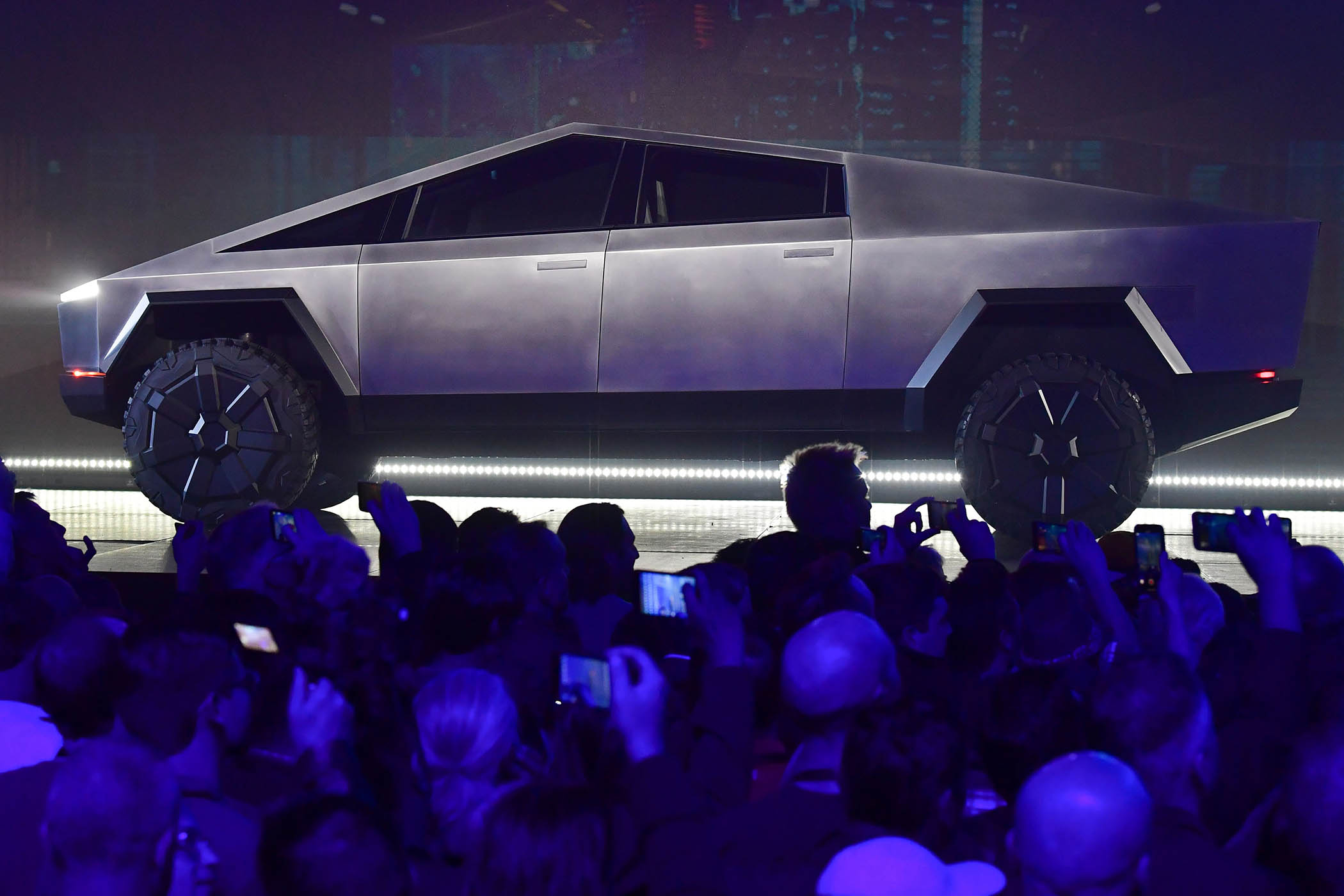Ever seen a Tesla Cybertruck? No? Consider yourself lucky. American road users are not so fortunate. The idea for it emerged from the fevered, ketamine-fuelled brain of Elon Musk sometime around 2012. He burbled about “a supertruck with crazy torque, dynamic air suspension, and corners like it’s on rails”. In late 2023, after many delays, the first deliveries emerged from one of Musk’s gigafactories, riding on a tsunami of hype that accompanies everything he touches.
The vehicle, said the blurb, represented “the future of automotive design”. It redefined “what’s possible with its bold design, advanced performance, and transforming features that push the limits of modern engineering”.
From its “bulletproof exoskeleton to the adaptive suspension and futuristic lighting”, the Cybertruck was “built for both power and intelligence”. And it would be produced in mind-boggling numbers – between 250,000 and 500,000 a year – apparently supported by the fact that Musk claimed at the end of 2023 to have more than a million reservations from excited customers-to-be.
So what was this Cybertruck? Well, like something you’ve never seen – except perhaps in video games or bad dreams. (If you’re interested, Google Images will be happy to provide a glimpse.) In its customary deadpan mode, Wikipedia describes it as “a distinctive angular design composed of flat, unpainted stainless steel body panels, drawing comparisons to low-polygon computer models”. When the vehicle was first unveiled in November 2019, a more imaginative observer said that it was “like a DeLorean that made love to the tank from the 80s arcade game Battlezone”.
So much for the hype; what about the reality? Well, by the end of 2024, only 39,000 Cybertrucks had been delivered and 96% of those pre-production reservations had been cancelled. And sales are now in freefall; in the first quarter of 2025, only 6,406 Cybertrucks (that’s less than half the number in the same quarter last year) were sold. In the second quarter of 2025, they’re down to 4,306. If it goes on like this, sales will be down to zero by the second quarter of next year.
And Tesla has maybe a billion dollars worth of these unsold monstrosities parked somewhere. In a nutshell, the Cybertruck is a turkey in a stainless steel jacket that should be dumped.
When it was first unveiled, one observer said it looked ‘like a DeLorean that made love to the tank from the 80s arcade game Battlezone’
Why has it bombed? Several reasons. The first is that, as usual, Musk overpromised and underdelivered – as he has with a “full self-driving” system. The supposed 500-mile (800km) battery range for the vehicle has not been achieved. The longest-range Cybertruck on launch (the all-wheel-drive version) only had an estimated range of about 325 miles, and real-world testing found the actual figure could be even lower.
The initial “solution” was an ad hoc range extender – an additional battery pack that cost $16,000, took up a third of the space on the Cybertruck’s 1.8 metre by 1.2 metre (6ft by 4ft) bed and weighed 500kg (1,100lbs). But that only extended the range by 130 miles while also reducing the vehicle’s load capacity.
So then Tesla reportedly started throwing heavy stuff overboard, ditching one of the electric motors, plus the motorised tonneau cover and the fancy air suspension system. But without the motor, the vehicle’s towing capacity (which matters a lot to many owners of pick-ups) was reduced by about 1,400kg. Tesla’s engineers are in a hole and they’re still digging.
Other factors driving customers away include the fact that repairs to the stainless steel body take longer and are more expensive than fixing conventionally built vehicles; plus, the Cybertruck is the target of multiple lawsuits related to its design flaws, particularly concerning its electronically controlled doors that have allegedly failed in emergencies, trapping passengers inside.
For most companies, a fiasco such as the Cybertruck would result in the sacking of the chief executive. It seems unlikely, though, that the gaggle of invertebrates that comprise the company’s board could bring themselves to dismiss Musk. The only thing that may persuade them would be a collapse of Tesla’s stock market valuation.
History offers an instructive parallel. In 1957, Ford launched the Edsel – a car named after Henry Ford’s son, backed by a decade of planning and $250m in development. It became notorious as one of the automotive industry’s greatest failures, memorably described by Time magazine as having “a grille resembling an Oldsmobile sucking a lemon”.
Yet Ford persisted for two long years before admitting defeat. The plug was finally pulled only when the Ford Foundation announced plans to sell $155m of company stock in order to diversify its holdings – a move that threatened the car manufacturer’s market valuation and forced the board’s hand.
The parallel is striking: sometimes corporate leadership only acts when the market speaks louder than reason. Tesla directors, please note.
What I’m reading
Word of mouth
Say It, Don’t Show It is a lovely essay by Neal Stephenson subtitled A Contrarian Take on Exposition.
Dry your AIs, mate
Kevin Kelly ponders the possible effects of “highly emotional AIs” in Emotional Agents.
Mustn’t crumble
How Democracies Fall Apart is a fascinating interview in Dissent magazine with the political scientist Adam Przeworski.
Photograph by Frederic J Brown/AFP via Getty Images

